While this particular regional grouping may seem puzzling, it seems justified in view of the importance of the sprawling urban complex of Samarra, which extends over dozens of kilometers along the Tigris River above Baghdad. For the brief period of some decades in the 9th century of the Common Era, the Abbasid caliphs moved their capital from Baghdad to Samarra. Many of the quarters of the extended city were military barracks. The cost of the construction and of maintaining the army seem to have contributed to the collapse of Abbasid finances in the middle of the 9th century. The site contains the remains of numerous palaces and mosques, some of them of considerable importance for establishing the history of the evolution of early Islamic architecture. Palaces and other buildings were decorated extensively with carved stucco and also with colorful glazed tiles. The carved stucco, which went through several styles of increasing abstraction has been used to trace the evolution of early islamic figurative imagery. It is clear from surviving fragments that human imagery decorated the walls of some of the buildings. Samarra has also yielded a great many ceramics, including Chinese wares of the T'ang period and their local imitations.
While the material is somewhat specialized, one can consult usefully for an introduction to the study of Samarra the following:

|
Wall revetment from a private house
Iraq, Samarra. 9th c. CE. Carved stucco (style A).
Inv. Nr. I.3530
Pub.: Islamic Art, p. 4-5; cf. also Grabar, pp. 57-59; Hattstein, pp. 105-107.
|
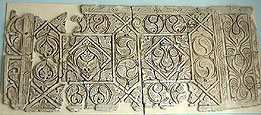
|
Wall revetment from a private house
Iraq, Samarra. 9th c. CE. Carved stucco, style B. 1.17 x 2.61 m.
Inv. Nr. I.3477
Pub.: Islamic Art, pp. 22-23
|

|
Wall revetment from a private house
Iraq, Samarra, from House XII, room 11 9th c. CE. Carved stucco, bevelled style (style C).
Pub.: Islamic Art, pp. 4-5; cf. also Grabar, pp. 57-59; Hattstein, pp. 105-107.
|

|
Wall revetment from a private house
Iraq, Samarra. 9th c. CE. Carved stucco, bevelled style (style C). 1.30 x 2.25 m.
Inv. Nr. I.3467
Pub.: Islamic Art, p. 24; cf. also Grabar, pp. 57-59; Hattstein, pp. 105-107.
|

|
Wall revetment from a private house
Iraq, Samarra. 9th c. CE. Carved stucco, bevelled style (style C).
Inv. Nr. I.3579
Pub.: Islamic Art, pp. 4-5; cf. also Grabar, pp. 57-59; Hattstein, pp. 105-107.
|

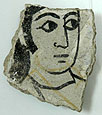
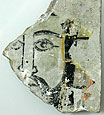
|
Fragments of wall paintings with human heads
Iraq, Samarra, from the palace of Gausaq and from a private house. 9th c. CE.
|
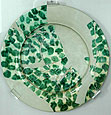
|
Plate
North China (found at Samarra, Iraq). 9th c. Glazed, insribed earthenware.
Inv. Nr. Sam. 839
|
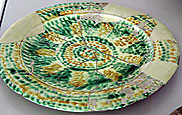
|
Plate
North China (found at Samarra in Iraq). 9th c.
Inv. Nr. Sam. 838
|
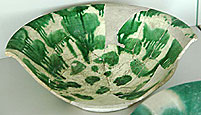
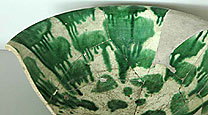
|
Bowl
North China (found at Samarra, Iraq). 9th c.
Inv. Nr. Sam. 784a
|
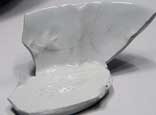
|
Fragment of bowl with relief decoration
North China, 9 c. CE. White porcelain. Found at Samarra, Dar al-Khilafa (Palace of Gausaq, Harem).
Inv. Nr. I.1150
|

|
Bowl
Iraq, Samarra. 9th c. Imitation of Chinese stoneware.
Inv. Nr. Sam. 748
|

|
Pan with handle
Iraq, Samarra. 9th c. Imitation of Chinese stoneware.
Inv. Nr. Sam. 411, 411a
|
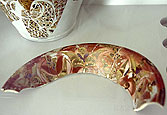
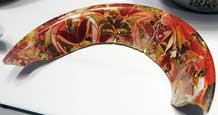
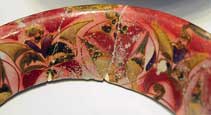
|
Fragment of a bowl
Iraq, Samarra. 9th c. Painted and glazed earthenware.
Inv. Nr. I.1105a
|
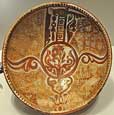
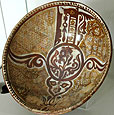
|
Dish with stylized representation of a bird
Iraq, Samarra. 9th c. Earthenware with golden lustre painting. 8.5 x 26.7 cm.
Inv. Nr. Sam 1102
Pub.: Islamic Art, p. 26; Hattstein, p. 120.
|



















